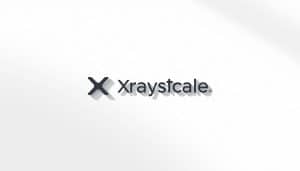Introduction
The blockchain revolution has introduced a decentralized future with immense potential, yet it faces a significant challenge: interoperability. As the blockchain ecosystem continues to grow, the need for seamless communication between different blockchains has become increasingly urgent. Enter cross-chain technology—a groundbreaking innovation that aims to bridge the gap between siloed blockchains, enabling them to interact and share information securely.
Cross-chain technology facilitates the transfer of data, assets, and information across multiple blockchains. It promises to enhance the efficiency and functionality of decentralized systems, opening the door to more robust applications and use cases. For instance, imagine transferring Bitcoin to an Ethereum-based decentralized finance (DeFi) platform without relying on a centralized exchange. Cross-chain technology makes this possible.
This article explores the intricacies of cross-chain technology, its mechanisms, real-world applications, and the benefits and challenges it brings. By leveraging platforms like Quantum AI, users can gain deeper insights into how cross-chain solutions enhance the trading and usability of digital assets.
What is Cross-Chain Technology?
Definition
Cross-chain technology refers to the ability of independent blockchains to interact and share data or assets directly without the need for intermediaries. It enables seamless interoperability across different blockchain networks, ensuring a decentralized and efficient exchange of value.
Key Features
- Interoperability: Facilitates communication between blockchains.
- Decentralization: Eliminates reliance on centralized exchanges or intermediaries.
- Security: Maintains the integrity of transactions across different networks.
How Cross-Chain Technology Works
Mechanisms of Cross-Chain Communication
- Atomic Swaps:
- Direct peer-to-peer exchange of cryptocurrencies across blockchains.
- Example: Trading Bitcoin for Litecoin without an intermediary.
- Relays:
- Monitor the state of one blockchain and relay information to another.
- Example: Polkadot’s relay chain connects multiple parachains.
- Hash Time-Locked Contracts (HTLCs):
- Ensure conditional transactions between blockchains.
- Example: Funds are locked in a smart contract until specific conditions are met.
- Bridges:
- Enable the transfer of tokens and data between blockchains.
- Example: Binance Smart Chain’s bridge for Ethereum-based assets.
Benefits of Cross-Chain Technology
- Enhanced Liquidity:
- Enables asset transfers across blockchains, improving market liquidity.
- Broader Ecosystem Integration:
- Facilitates collaboration and functionality between different blockchain platforms.
- Reduced Costs:
- Minimizes fees by avoiding centralized exchanges.
Applications of Cross-Chain Technology
Decentralized Finance (DeFi)
- Example: Interoperability between Ethereum and Binance Smart Chain enables users to access DeFi protocols across both platforms.
- Impact: Expands access to liquidity pools, lending platforms, and yield farming.
Non-Fungible Tokens (NFTs)
- Example: Cross-chain bridges allow NFTs created on Ethereum to be traded on Solana marketplaces.
- Impact: Enhances the liquidity and usability of NFTs.
Supply Chain Management
- Example: Cross-chain solutions enable seamless data sharing between private and public blockchains for transparent tracking.
- Impact: Improves supply chain transparency and efficiency.
Gaming
- Example: Games built on different blockchains can interact, allowing in-game assets to be shared or traded across platforms.
- Impact: Enhances user experiences and expands gaming ecosystems.
Case Studies
Case Study 1: Polkadot
- Overview: Polkadot’s relay chain connects multiple parachains, facilitating cross-chain communication.
- Outcome: Enabled interoperability for projects like Acala (DeFi) and Moonbeam (smart contracts).
- Lesson: A dedicated relay chain can significantly improve blockchain interoperability.
Case Study 2: Wanchain
- Overview: Wanchain provides decentralized bridges for asset transfers across blockchains.
- Outcome: Facilitated Bitcoin-to-Ethereum transfers for DeFi applications.
- Lesson: Decentralized bridges enhance usability and reduce reliance on centralized exchanges.
Challenges of Cross-Chain Technology
Security Risks
- Vulnerabilities in cross-chain bridges and smart contracts.
- Example: The $610 million Poly Network hack highlighted the risks of cross-chain operations.
Scalability Issues
- High transaction volumes can strain cross-chain networks.
Standardization
- Lack of universal standards complicates interoperability efforts.
Complexity
- Implementing cross-chain systems requires advanced technical expertise.
Pros and Cons of Cross-Chain Technology
Pros
- Promotes decentralization and reduces reliance on intermediaries.
- Enhances liquidity and market efficiency.
- Expands blockchain ecosystems and use cases.
Cons
- Security vulnerabilities can lead to significant losses.
- High implementation complexity and costs.
- Limited adoption due to scalability challenges.
Conclusion
Cross-chain technology represents a critical step forward in the evolution of blockchain ecosystems. By enabling seamless communication and asset transfer across blockchains, it addresses the fragmentation that has long hindered blockchain adoption. Whether it’s facilitating DeFi operations, enhancing NFT liquidity, or streamlining supply chain processes, cross-chain technology holds immense potential.
However, like any emerging technology, cross-chain systems face challenges such as security risks and scalability issues. Addressing these concerns will be essential for widespread adoption. Platforms like Quantum AI provide valuable tools and insights, empowering users to leverage cross-chain technology effectively for trading and beyond.
As the blockchain industry continues to innovate, cross-chain technology is set to play a pivotal role in creating a more connected, efficient, and decentralized future.
FAQs
What is cross-chain technology?
Cross-chain technology enables different blockchains to communicate and share data or assets directly, enhancing interoperability.
How does cross-chain technology benefit cryptocurrency traders?
It allows traders to move assets seamlessly across blockchains, improving liquidity and reducing costs associated with centralized exchanges.
What are atomic swaps?
Atomic swaps are peer-to-peer exchanges of cryptocurrencies across blockchains without intermediaries.
What is the role of cross-chain bridges?
Cross-chain bridges facilitate the transfer of tokens and data between different blockchains, enhancing usability.
What are some examples of cross-chain platforms?
Platforms like Polkadot, Cosmos, and Wanchain enable cross-chain communication and asset transfers.
How does cross-chain technology support DeFi?
It allows DeFi protocols to operate across multiple blockchains, increasing access to liquidity and reducing fragmentation.
What are the security risks of cross-chain technology?
Risks include vulnerabilities in smart contracts and bridges, which can be exploited by hackers.
How does cross-chain technology impact NFTs?
It enables NFTs to move between blockchains, increasing their liquidity and market accessibility.
Can cross-chain technology improve supply chain management?
Yes, it enhances data sharing and transparency, improving efficiency and accountability in supply chains.
How can Quantum AI assist with cross-chain trading?
Quantum AI provides tools and insights to optimize cross-chain trading strategies, making it easier for users to leverage this innovative technology.
























 Bitcoin
Bitcoin  Ethereum
Ethereum  Tether
Tether  XRP
XRP  USDC
USDC  Wrapped SOL
Wrapped SOL  Lido Staked Ether
Lido Staked Ether  TRON
TRON  Dogecoin
Dogecoin  Cardano
Cardano  Figure Heloc
Figure Heloc  WhiteBIT Coin
WhiteBIT Coin  Wrapped stETH
Wrapped stETH  Bitcoin Cash
Bitcoin Cash  Wrapped Bitcoin
Wrapped Bitcoin  USDS
USDS  Chainlink
Chainlink  Wrapped eETH
Wrapped eETH  Binance Bridged USDT (BNB Smart Chain)
Binance Bridged USDT (BNB Smart Chain)  LEO Token
LEO Token  WETH
WETH  Hyperliquid
Hyperliquid  Stellar
Stellar  Monero
Monero  Zcash
Zcash  Ethena USDe
Ethena USDe  Coinbase Wrapped BTC
Coinbase Wrapped BTC  Litecoin
Litecoin  Sui
Sui  Avalanche
Avalanche  Hedera
Hedera  Shiba Inu
Shiba Inu  sUSDS
sUSDS  USDT0
USDT0  Dai
Dai  Mantle
Mantle  Toncoin
Toncoin  World Liberty Financial
World Liberty Financial  PayPal USD
PayPal USD  Cronos
Cronos  Ethena Staked USDe
Ethena Staked USDe  Uniswap
Uniswap  Polkadot
Polkadot  MemeCore
MemeCore  Aave
Aave  Bittensor
Bittensor  USD1
USD1  Canton
Canton